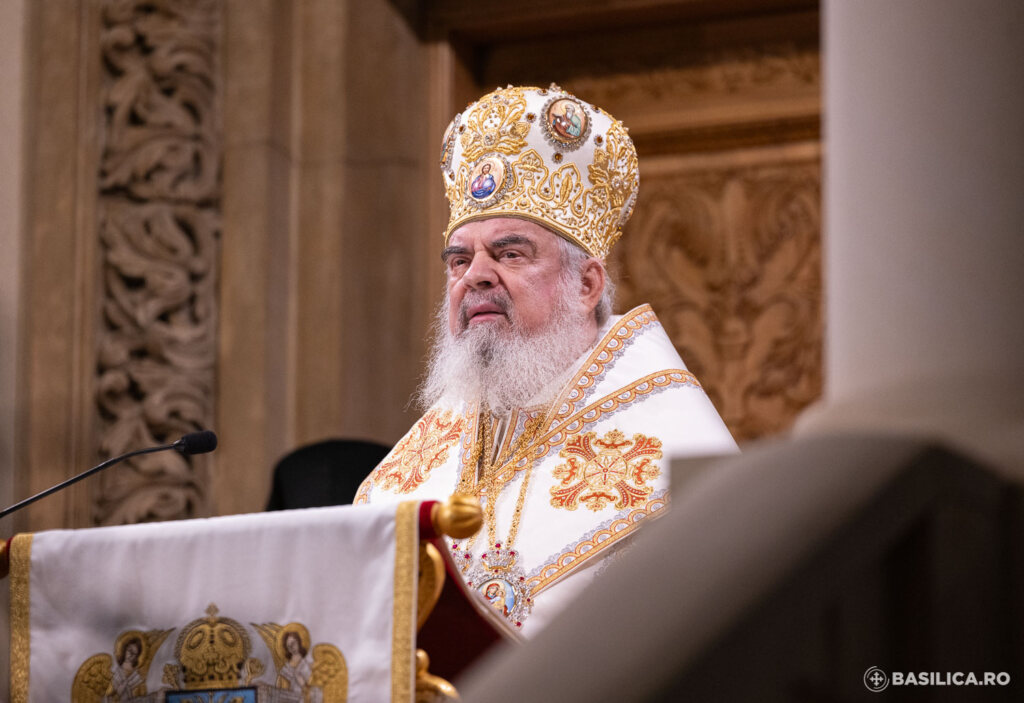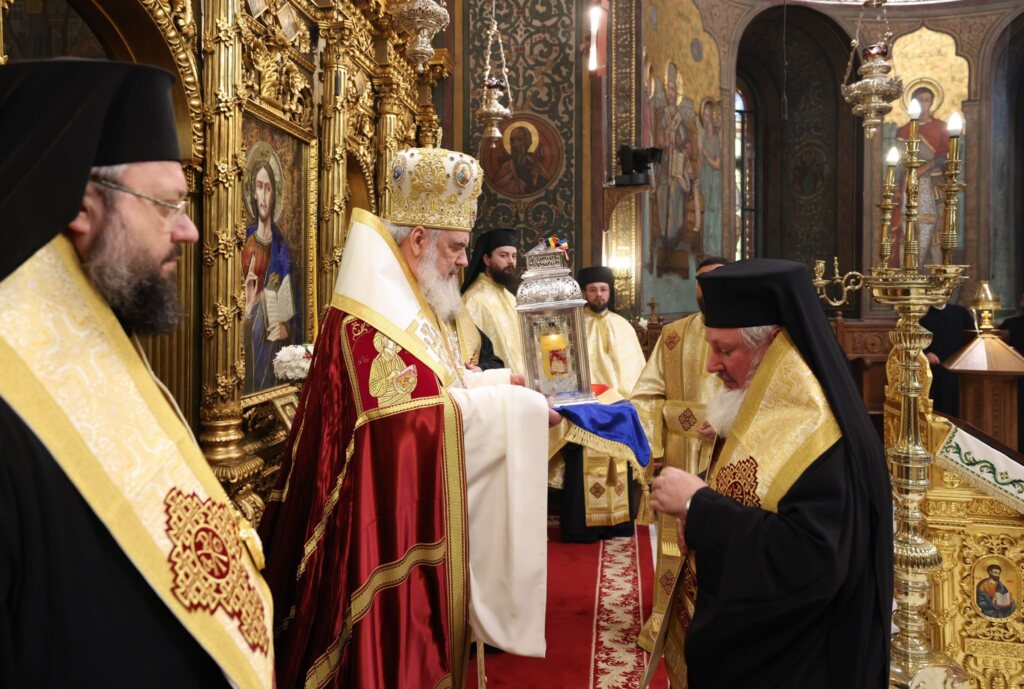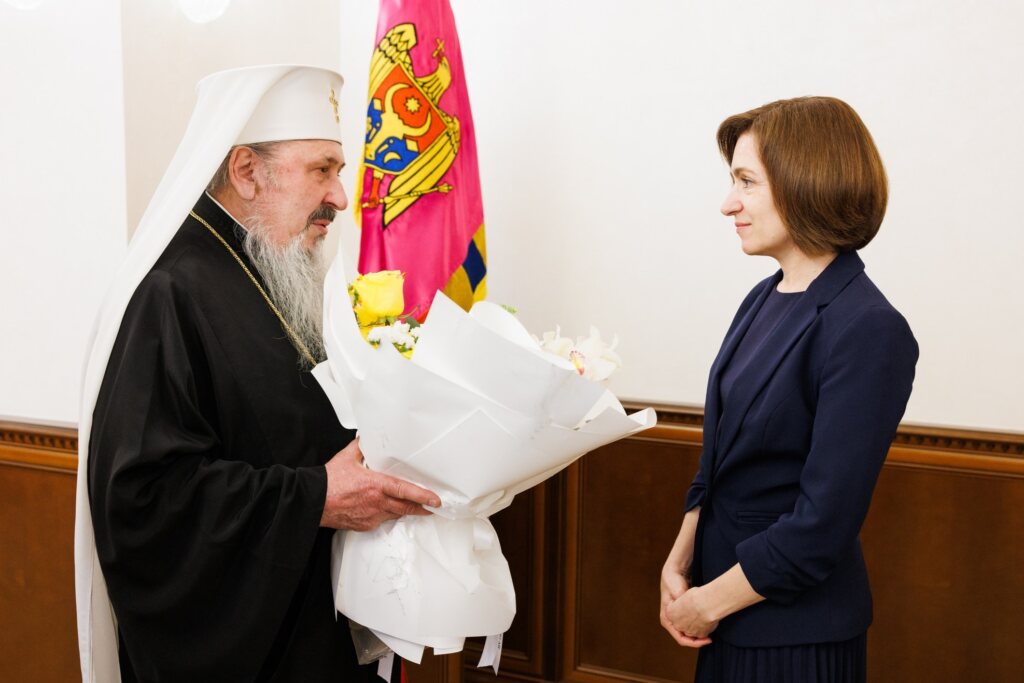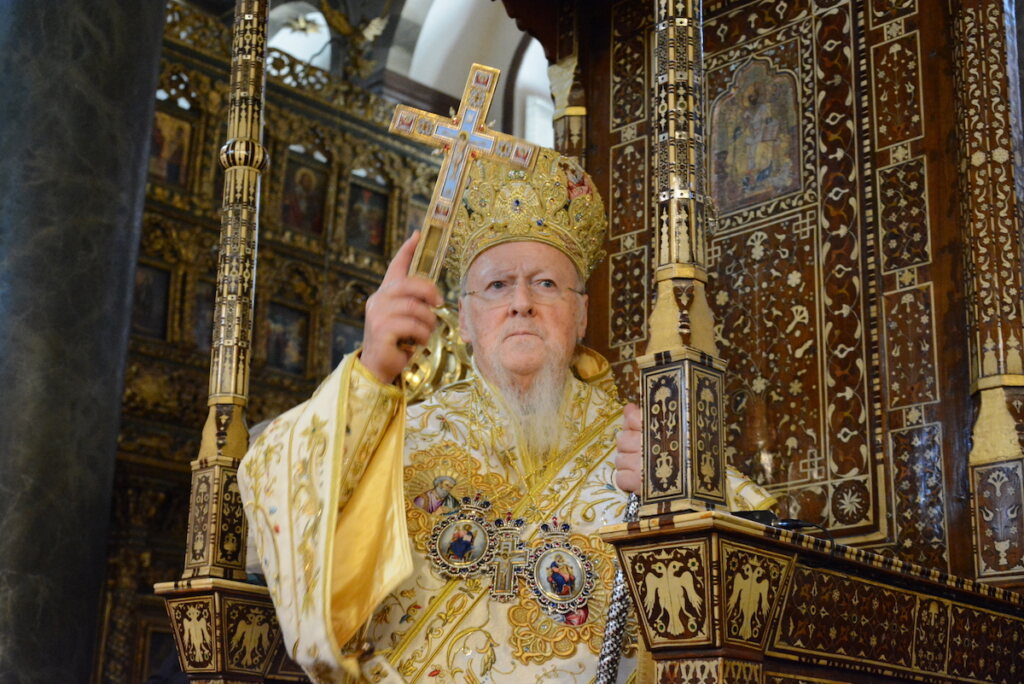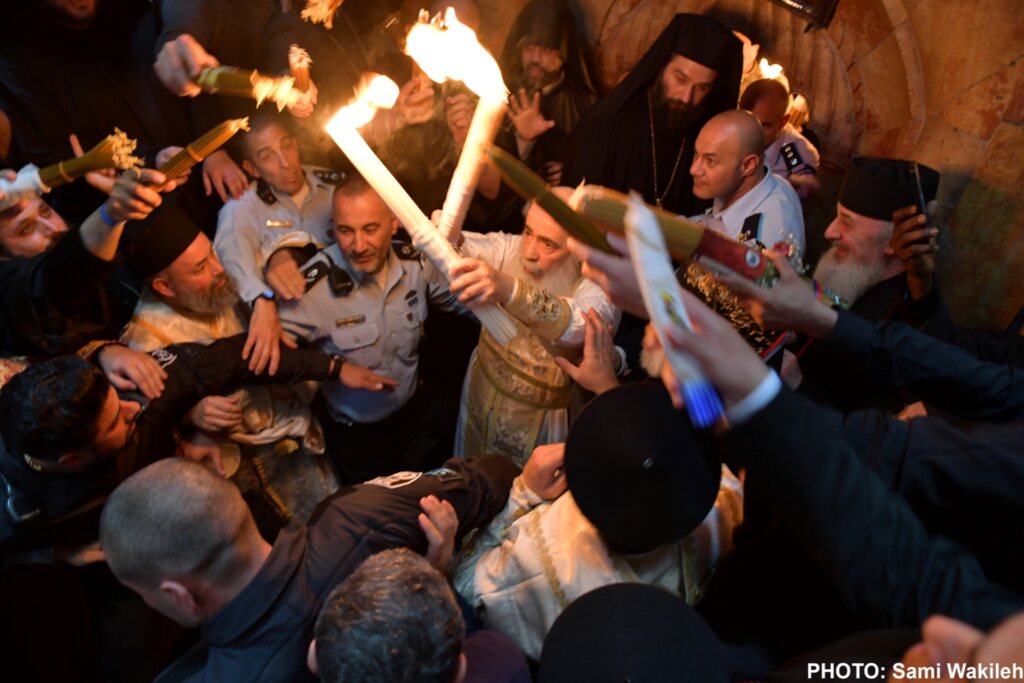Saints Great Emperors just like the Apostles Constantine the Great and his mother Helen were celebrated Wednesday, 21 May 2014, in the Romanian Orthodox Church. On this occasion, the Patriarchal Cathedral of Bucharest celebrated its historical dedication day, the place of worship having been under the protection of the Saints Emperors Constantine and Helen for 356 years.
The Divine Liturgy was celebrated by His Beatitude Daniel, Patriarch of the Romanian Orthodox Church and by several hierarchs, members of the Holy Synod of the Romanian Orthodox Church, assisted by a group of priests and deacons on a podium specially arranged near the Patriarchal Cathedral.
After reading the Holy Gospel, the Patriarch of Romania addressed a sermon to those present at the Joy Hill.
The Patriarch of Romania showed that the Saints Emperors have protected this Patriarchal Cathedral for 356 years: “Today’s feast is dedicated to the Saints Emperors Constantine and Helen. This feast is the historical celebration of the dedication day of the Patriarchal Cathedral which was first a church monastery, then temporary Metropolitan Cathedral and then temporary Patriarchal Cathedral. This cathedral was built by the ruling prince of Wallachia, Constantine Serban Basarab voivode from 1656 – 1658, so that it is 356 years old”.
The Patriarch of the Romanian Orthodox Church explained the faithful present the relationship between the Saints Emperors and the Cross of Christ: “Saint Constantine the Great not only gave freedom to the Christians, but he also loved the Church and helped her. He built lots of churches, and the mother of Emperor Constantine, Empress Helen, who was associated to the throne and leadership of the empire as augusta, discovered the Holy Cross in the earth, in Jerusalem. It is very interesting that Saint Constantine discovered the Cross as light in the sky and his mother discovered the Cross of Christ on which He was crucified, showing the Mystery of the Cross which relates the heaven to earth filling them of the love of Christ in which the love of the Most Holy Trinity is shown. This is why, just as we see in the icon of the Saints Emperors Constantine and Helen, the cross is between them, while they show the cross which they confess as sacrificial love of Christ for the world.”
The later Christian philanthropy starts from the Christian attitude of the Saints Emperors Constantine and Helen
His Beatitude emphasised the importance of the laws issued by the first Christian emperor: “Saint Emperor Constantine the Great issued laws with Christian content, abolished torture, favoured family, laws against abortion, and laws which raised the human dignity, favouring the aiding of the poor, sick and aged people, and set up institutions for taking good care of the sick. Thus, all the later Christian philanthropy started from the Christian attitude of the Saints Emperors Constantine and Helen”.
Saint Constantine Brancoveanu crowns all his Christian work through the sacrifice of his life
The Patriarch of Romania spoke about the tortures the Brancovean Martyr Saints suffered and about their martyrdom: “The execution showed cruelty never seen before as the Western sources say. He and his sons were tortured months on end in the prison, and on 15 August, when it was Constantine Brancoveanu’s birthday – he was 60 – in the morning, they were dressed in long coats, chained and taken through Constantinople. In the afternoon they were executed in front of sultan Ahmed III and of many representatives of the Western countries, as a sort of exemplary punishment, of great cruelty, rather to intimidate or frighten those present and reaffirm their power, because the Ottoman Empire had begun to decay. After they were beheaded their heads were put in spears in the city but not for a long time, because some of the people resented this form of punishment. Then their bodies were thrown into the sea and secretly recovered by some Christians, and buried in the monastery of the Mother of God in Halki Island”.
Procession of the relics of Saint Constantine Brancoveanu
His Beatitude has also spoken about the bringing of the relics of Saint Constantine Brancoveanu to the country and about the procession organised in 1934 which would be repeated today, taking the following itinerary: “Thus, in 1720, six years after the tragic death of Brancoveanu, his wife, Lady Maria brought the remains of her husband with great risk and expenses, and buried them in the church of Saint George the New of Bucharest, keeping the secret of his grave and only discreetly writing on an icon lamp laid on the grave, that that was the place of the relics of Saint Constantine Brancoveanu, prince of Wallachia. In 1914, it was a special moment when the inscription on the icon lamp was revealed, and in 1934, 80 years ago, the relics of the prince were unburied and taken into a coffin till here, at the Patriarchate, in the presence of the King, of the Patriarch and of an impressive group of hierarchs, priests, monks and nuns. We wanted to repeat today, at 15.00 hours, the procession of 1934, taking the same route.
The Patriarch of the Romanian Orthodox Church has also emphasised the fact that Saint Constantine Brancoveanu supported the entire Orthodoxy, having been an example for the Christian family, and for the Christian rulers and intellectuals: “Saint Constantine Brancoveanu helped the entire Orthodoxy, helped all the Orthodox Christians under the Ottoman occupation, printed books in Greek, Slavonic, besides those in the Romanian language. It was for the first time in history that he printed a book in Arabian at the printing press of Snagov Monastery, in 1701, helped by the later on great metropolitan Antim Ivireanul, who would be a martyr too, in 1716, two years after Constantine Brancoveanu’s death. He helped the Georgians, the Patriarchates of Constantinople, Alexandria, Jerusalem, and at least four great monasteries from Mount Athos, some people say nine monasteries. He everywhere showed generosity, devotion and much appreciation. He supported especially the Orthodoxy of Transylvania. He built a church in Fagaras, at Ocna Sibiului and the most important of them was the Monastery of Sambata de Sus where he set up a school to prepare the young people to face the danger of uniatism, namely the conversion of the Orthodox to Catholicism. Thus, Saint Constantine Brancoveanu was a generous, moderate man, devoted faithful and father to 11 children: 4 sons and 7 daughters. Therefore, he is an example for the Christian family, for the Christian rulers and for intellectuals.
Let us learn from the example of the Brancovean Martyr Saints that the love of Christ should always be stronger than the fear of death
“Let us pray God to give us strong faith, love for Church and for the righteous people and learn from the example of the Brancovean Martyr Saints that the love for Christ should always be stronger than the fear of death, according to the words of God in the book of the Revelation: “Be faithful till death and I will give you the crown of life”, His Beatitude said.
This year, when it is 300 years since the martyr death of the Brancovean saints, the feast got a historical dimension because, it was for the first time that the Orthodox Romanians could venerate the relics of Saint Voivode Constantine Brancoveanu laid under the canopy specially arranged on the esplanade of the Cathedral, besides the relics of the Great Emperors Constantine and his mother Helen, and the relics of Saint Dimitrios the New, Protector of Bucharest.


